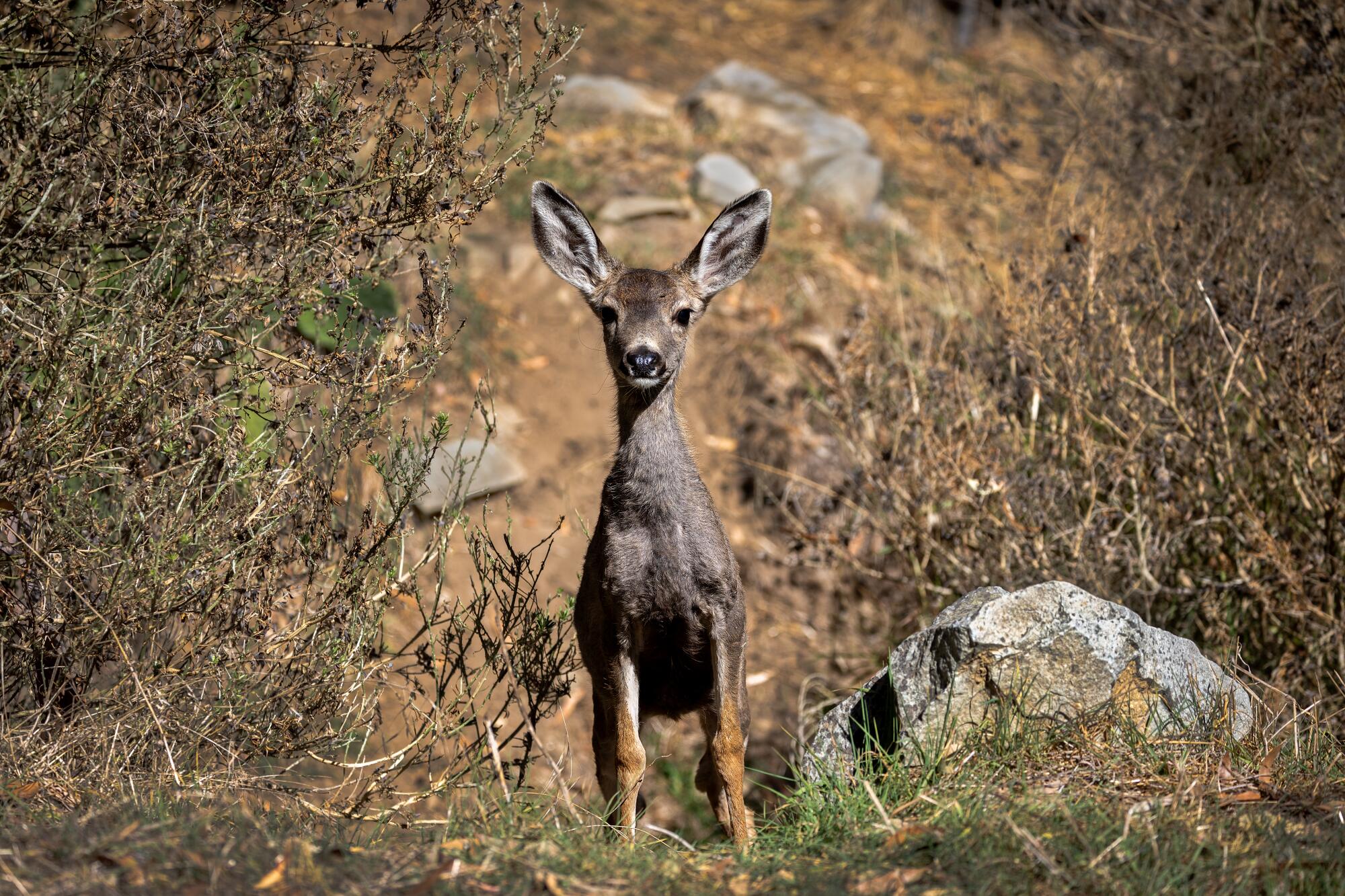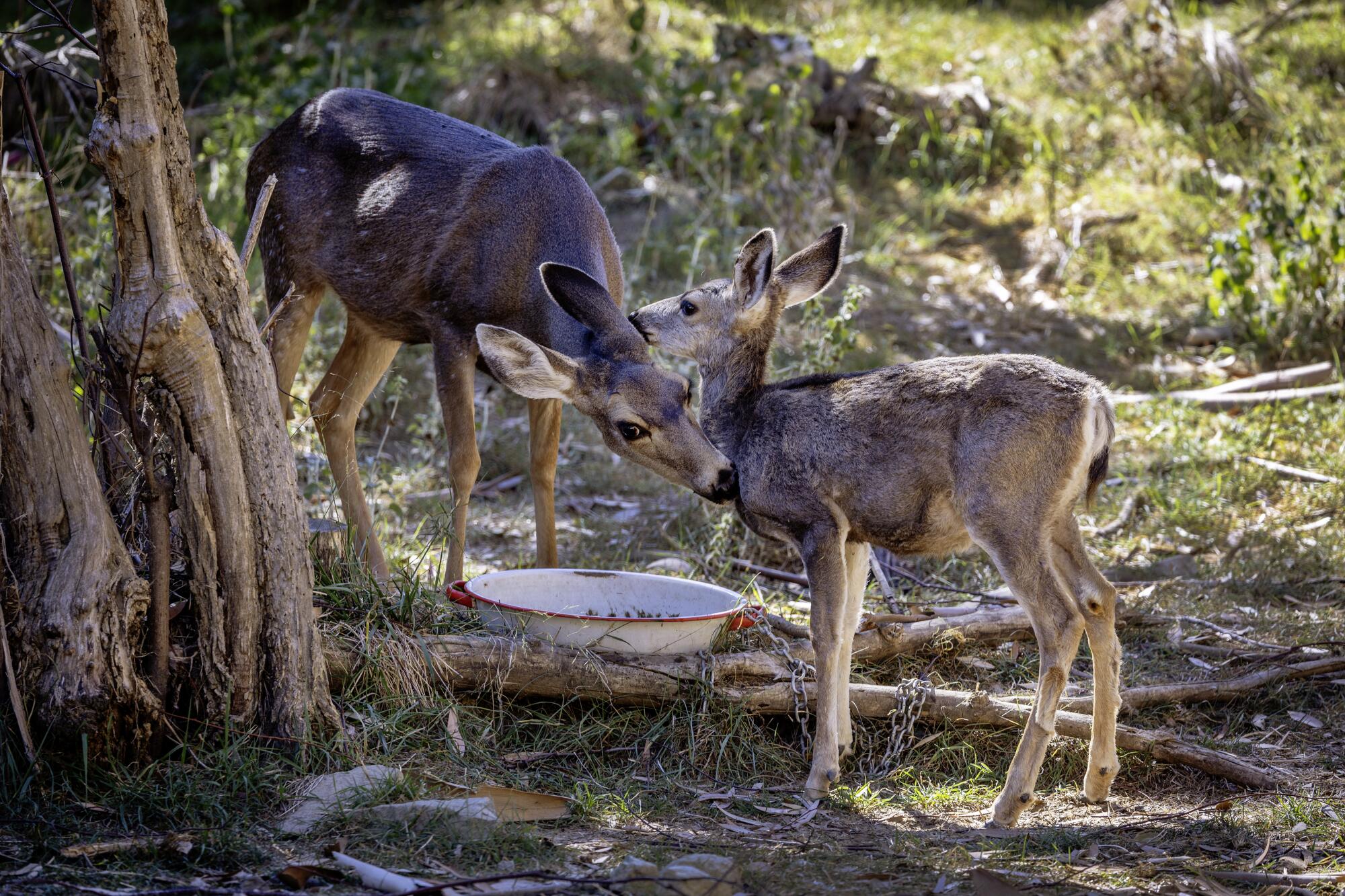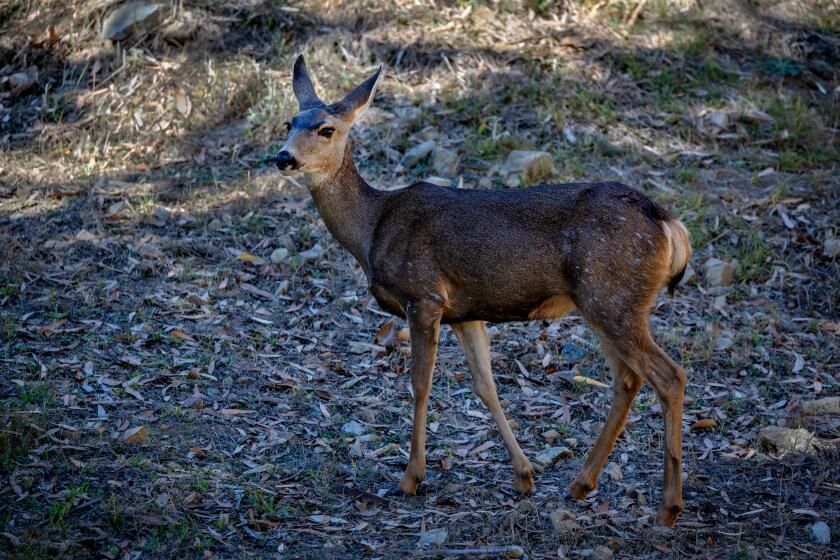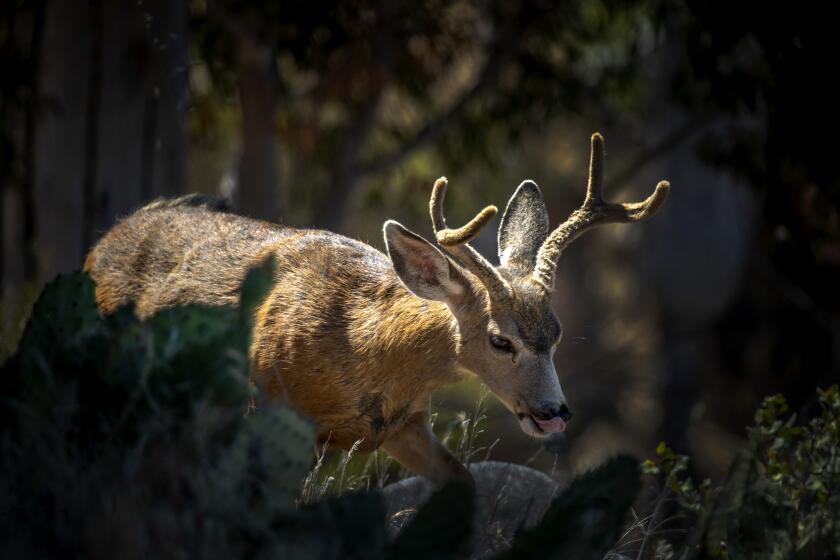
Santa Catalina Island’s invasive mule deer dodged a bullet — or several — on Wednesday.
At a special meeting of the Los Angeles County Fish and Wildlife Commission, the Catalina Island Conservancy, which controls 88% of the island, announced it was scrapping plans to eradicate the nonnative species by shooting them from helicopters with high-powered rifles.
L.A. County Supervisor Janice Hahn, whose district includes the island, confirmed in a statement that the conservancy has “taken the aerial shooting proposal off the table.”
“I appreciate the Conservancy for listening to the serious concerns people had about this plan, especially from people living on the island,” Hahn said in a statement. “I heard from residents who were terrified at the thought of bullets raining down from helicopters over their beloved island and others who couldn’t stand the thought of the deer carcasses that would be left in their wake.”
The conservancy issued a statement late Wednesday afternoon, saying that “experts have clearly stated that aerial hunting is the most humane method for removing mule deer in these situations.”
However, the group said it understood and respected the concerns of the community and Hahn, and would be revising its plan “to prioritize alternative methods for deer removal.” It also noted that this process “will take time.”
Mule deer were introduced to the island in the 1930s as a game species for hunting, according to the conservancy.

Their population can range from 500 to 1,800, according to the conservancy. The group claims the invasive deer have destroyed natural habitat — including vegetation found only on the island — and exacerbated the risk of soil erosion in overgrazed areas.
As the conservancy continues to plot how to hasten their demise, the deer are starving and dying of thirst.
Photos presented at Wednesday’s meeting included a young dead deer lying on a paved walkway. Another showed a male deer scavenging through an Avalon resident’s trash can.
“The island and the deer are both fighting for survival, and neither one is winning,” Whitney Latorre, the conservancy’s chief executive, said in an interview in the fall. “Unless we address the deer issue, the island will become more and more vulnerable to the devastating consequences brought on by rising temperatures and drought.”
Hahn drafted a letter that the supervisors unanimously approved on April 23 opposing the proposal to hunt the deer from helicopters, calling it “inhumane and drastic.”
She said her letter was prompted by “an intense public outcry” that sprung up after the aerial sharpshooting proposal became public last year.
Los Angeles County Supervisor Janice Hahn drafted an opposition response to a proposal to shoot Catalina Island’s invasive mule deer population from helicopters.
The conservancy’s original plan was to hire sharpshooters from the Connecticut-based nonprofit White Buffalo Inc. The group would use AR-15-style rifles with lead-free bullets, to avoid poisoning natural scavengers.
Some carcasses would remain where they fell, and those closer to Avalon and roadsides would be removed.
Ultimately, California’s Department of Fish and Wildlife will decide whether to allow whatever plan the conservancy files to remove the deer. The agency hadn’t made a ruling on the helicopter proposal because it had been waiting for additional paperwork from the conservancy, a Fish and Wildlife spokesperson said.

It’s unclear what will happen next.
Hahn is asking that the conservancy reconsider alternative proposals previously dismissed, although she didn’t endorse any specific course of action, a spokesperson said.
The conservancy had considered fencing, recreational hunting, the introduction of natural predators, relocation, sterilization and chemical contraceptives before settling on aerial sharpshooting, which it said was an efficient way to quickly eliminate a large number of animals.
Invasive mule deer are pushing native plants to the brink on Catalina Island. Officials want to hunt animals from helicopters.
The main drawbacks included the loud sounds of gunfire, which could distress wildlife and residents.
In comparison, fencing was described as costly and challenging, given the island’s topography, while recreational hunting was generally ineffective, the conservancy said. Between 200 and 300 hunters visit the island annually, according to the conservancy.
Overall, there are about 4,200 residents and 1 million visitors to Catalina, which spans about 48,000 acres.
Opposition to aerial hunting has been intense. The advocacy group Coalition to Save Catalina Island Deer has collected more than 18,000 signatures since Sept. 23 on a petition opposing the concept.
Catalina Island Conservancy and residents near compromise over deer eradication proposal
Bernd Blossey, a natural resources and environment professor at Cornell University, said in an interview in April that aerial shooting was a standard form of extermination.
Blossey, who chairs the university’s deer management program, pointed to aerial shooting efforts used to eradicate feral goats on the Galapagos Islands and in New Zealand earlier this century.
Blossey also believes that calls to relocate the animals — as some conservationists want — may be more harmful than helpful.
“The capture is traumatic, the transport is traumatic and the success rates of doing both are poor,” he said. “Then they’re moved to areas that they don’t know and it’s just not a good thing.”
The American Assn. of Wildlife Veterinarians endorsed the aerial shooting on Wednesday via a letter, while the American Bird Conservancy, the California Botanic Garden and several others backed permanently removing the nonnative deer.
More to Read
Sign up for Essential California
The most important California stories and recommendations in your inbox every morning.
You may occasionally receive promotional content from the Los Angeles Times.














